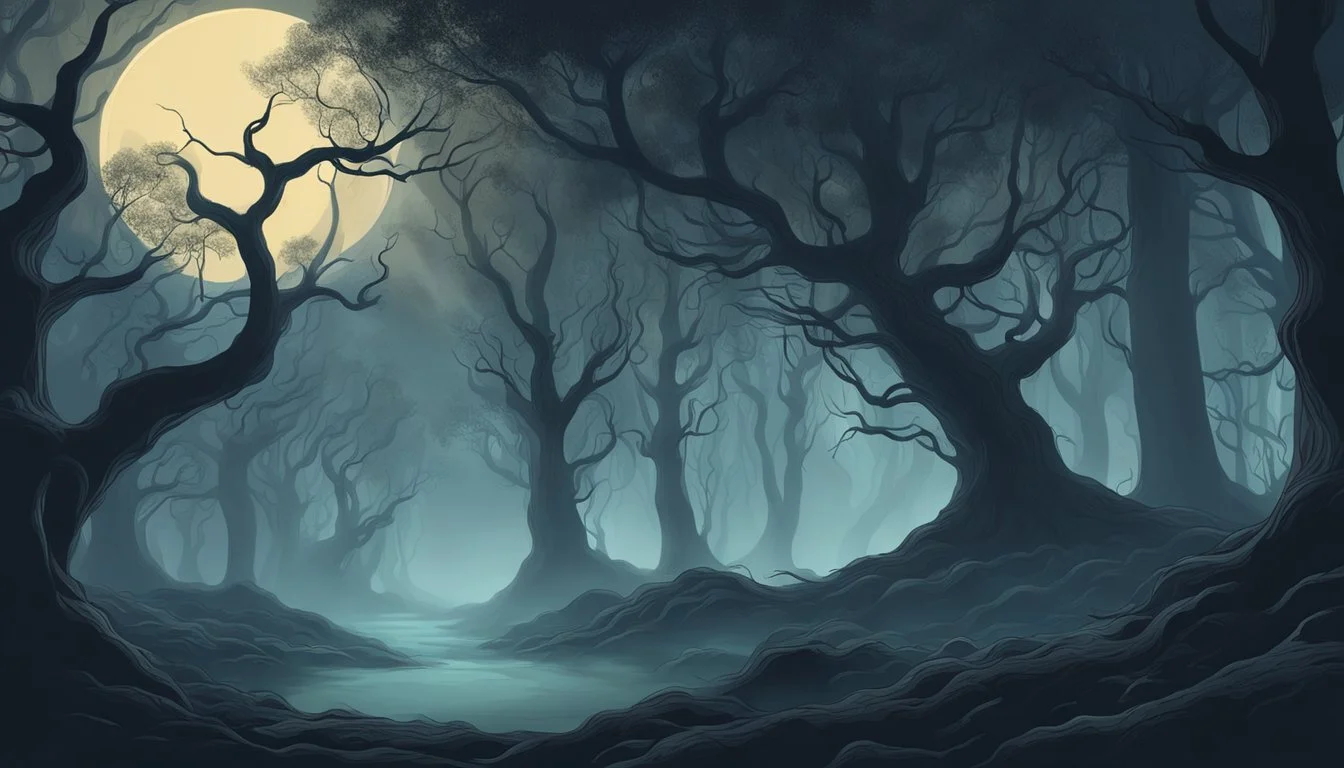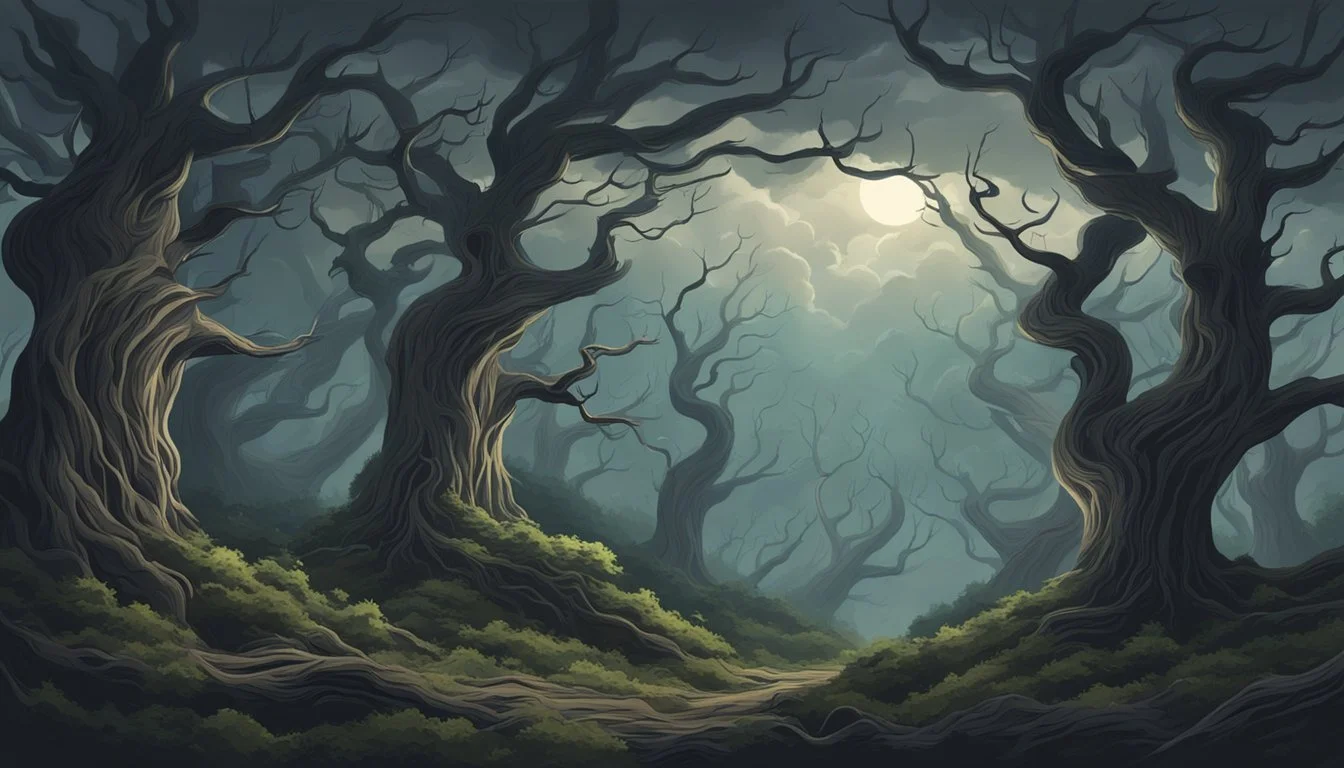Unlocking Fear: 'The Nightmare' Exposes the Chilling Truth Behind Sleep Paralysis!
"The Nightmare" is a 2015 American documentary film that explores the terrifying phenomenon of sleep paralysis. Directed by Rodney Ascher, the film premiered at the Sundance Film Festival and features eight individuals sharing their harrowing experiences with this sleep disorder.
The documentary provides a chilling look into sleep paralysis, a condition where people find themselves unable to move or speak while transitioning between wakefulness and sleep. Through spine-tingling reenactments and first-hand accounts, "The Nightmare" immerses viewers in the unsettling world of those who suffer from this frightening condition.
Ascher, who experienced sleep paralysis himself, crafts a compelling narrative that blends personal stories with dramatic recreations. The film delves into the psychological and cultural aspects of sleep paralysis, offering viewers a unique perspective on this mysterious and often misunderstood sleep disorder.
Background
"The Nightmare" is a thought-provoking documentary that explores the phenomenon of sleep paralysis. The film delves into the experiences of eight individuals who have encountered this unsettling condition.
Director Profile
Rodney Ascher, the director of "The Nightmare," is known for his innovative approach to documentary filmmaking. He previously gained recognition for his work on "Room 237," a documentary examining interpretations of Stanley Kubrick's "The Shining."
Ascher's personal experience with sleep paralysis inspired him to create "The Nightmare." His unique storytelling style blends interviews with dramatic reenactments, creating a visually striking and emotionally impactful narrative.
The director's background in both documentary and horror genres allows him to effectively capture the terrifying nature of sleep paralysis while maintaining a factual approach.
Premiere and Accolades
"The Nightmare" made its world premiere at the prestigious Sundance Film Festival on January 26, 2015. The film's debut at such a renowned event brought significant attention to the topic of sleep paralysis.
Critics praised Ascher's innovative approach to documentary filmmaking. The movie's blend of personal accounts and chilling reenactments resonated with audiences and critics alike.
Following its festival run, "The Nightmare" was released to wider audiences later in 2015. The documentary's success helped bring awareness to sleep paralysis and its effects on individuals' lives.
Synopsis
"The Nightmare" is a documentary that explores the terrifying phenomenon of sleep paralysis. The film delves into the experiences of eight individuals who have suffered from this mysterious condition, featuring their personal accounts and recreations of their hallucinations.
Exploring Sleep Paralysis
Sleep paralysis is a temporary inability to move or speak that occurs when falling asleep or waking up. "The Nightmare" presents this condition through interviews and dramatized reenactments. The film highlights the common elements reported by sufferers, including feelings of pressure on the chest and vivid hallucinations.
Director Rodney Ascher, who experienced sleep paralysis himself, uses a mix of personal testimonies and atmospheric recreations to convey the horror of these episodes. The documentary showcases how different individuals cope with their experiences, from seeking medical explanations to exploring supernatural theories.
"The Nightmare" emphasizes the universality of sleep paralysis, featuring subjects from various backgrounds who describe strikingly similar encounters. The film's approach blends documentary techniques with horror movie aesthetics, creating a unique viewing experience that aims to educate and unsettle its audience.
Creative Elements
The Nightmare employs striking visual and auditory techniques to immerse viewers in the terrifying world of sleep paralysis. Its innovative approach blends documentary and horror elements to create a uniquely unsettling experience.
Cinematography and Visuals
The film's visual style mirrors the disorienting nature of sleep paralysis. Dark, shadowy scenes dominate, punctuated by eerie lighting that casts long shadows. Reenactments of sleep paralysis episodes use tight framing and unusual angles to heighten tension.
Slow-motion sequences and blurred imagery replicate the dreamlike state between sleeping and waking. The camera often lingers on seemingly mundane objects, imbuing them with an air of menace. This technique builds suspense and reflects the heightened awareness many experience during episodes.
Interviews with subjects are interspersed with surreal visual metaphors. These artistic interpretations of sleep paralysis visions range from abstract shapes to more defined, nightmarish figures.
Sound and Music
Audio plays a crucial role in The Nightmare's ability to unsettle viewers. The sound design incorporates subtle background noises that create an atmosphere of unease. Low-frequency drones and sudden, jarring sounds mimic the auditory hallucinations often reported during sleep paralysis.
The film's score alternates between minimalist, ambient tracks and more intense, discordant pieces. This dynamic shifts with the emotional state of the interviewees and the content of their stories. During reenactments, the music swells to heighten dramatic tension.
Silence is also used effectively, creating moments of anticipation that keep viewers on edge. The absence of sound in certain scenes amplifies the feeling of isolation experienced during sleep paralysis episodes.
The Depiction of Reality
"The Nightmare" blends documentary filmmaking with horror elements to explore sleep paralysis. The film relies on first-hand accounts and dramatic reenactments to convey the terrifying experiences of those affected.
Personal Experiences
Eight individuals share their encounters with sleep paralysis in "The Nightmare." The film presents their stories through interviews and chilling recreations. These personal narratives form the core of the documentary, offering viewers a glimpse into the frightening world of sleep paralysis.
The subjects describe feeling unable to move upon waking, a key characteristic of the condition. Many report sensing a malevolent presence or seeing shadowy figures in their rooms. The film's reenactments bring these descriptions to life, using horror techniques to visualize the participants' experiences.
Director Rodney Ascher, who experienced sleep paralysis himself, avoids using an omniscient narrator. This approach allows the subjects' voices to dominate, creating a more immersive and unsettling viewing experience. The absence of expert commentary emphasizes the personal nature of these encounters.
Critical Reception
The Nightmare received mixed reviews from critics upon its release. Professional critics praised the film's ability to capture the unsettling nature of sleep paralysis experiences while some questioned its documentary approach.
Professional Reviews
The Nightmare holds a 67% approval rating on Rotten Tomatoes based on 58 reviews. Critics highlighted the film's effectiveness in portraying the terrifying nature of sleep paralysis. Many praised director Rodney Ascher's creative visual recreations of the subjects' experiences.
Some reviewers felt the documentary style blended well with horror elements to create a uniquely disturbing viewing experience. The film's atmospheric tone and haunting reenactments were frequently cited as strengths.
A number of critics, however, expressed reservations about the lack of scientific context provided. Some felt the film relied too heavily on anecdotal accounts without offering medical explanations or expert analysis of sleep paralysis.
Availability
"The Nightmare" documentary can be accessed through various streaming platforms. Its availability may differ based on geographic location and subscription services.
Streaming Services
"The Nightmare" is currently available on Tubi, a free ad-supported streaming service. Viewers can watch the 2015 documentary without a subscription, though they may encounter occasional advertisements. The film runs for 1 hour and 31 minutes and is rated TV-MA.
Prime Video also offers "The Nightmare" in some regions. Availability on this platform may vary depending on the viewer's location and Prime subscription status.
JustWatch, a streaming search engine, ranks "The Nightmare" at position 7065 on its Daily Streaming Charts. This ranking fluctuates based on viewer interest and platform availability.
Potential viewers should check their local streaming services to confirm accessibility in their area. Release dates and availability can change over time across different platforms.
Viewer Engagement
"The Nightmare" elicits strong reactions from audiences due to its chilling subject matter and vivid reenactments. Critics and viewers alike have shared their thoughts on the documentary's effectiveness in portraying sleep paralysis.
Audience Reactions
"The Nightmare" has garnered mixed reviews from critics and viewers. On Rotten Tomatoes, the film holds a 60% approval rating. Many praise its ability to recreate the terrifying experience of sleep paralysis through unsettling visuals and sound design.
Some viewers report feeling genuinely frightened while watching, with the documentary's reenactments triggering visceral responses. Others appreciate the film's approach to shedding light on a little-understood phenomenon.
Critics note the documentary's effectiveness in building tension and creating an immersive atmosphere. The personal accounts shared by the eight featured individuals resonate with many viewers who have experienced sleep paralysis themselves.
However, some reviewers argue that the film relies too heavily on dramatizations at the expense of scientific explanations. This approach has led to debates about the documentary's balance between entertainment and education.


